This article was medically reviewed by Luba Lee, FNP-BC, MS. Luba Lee, FNP-BC is a Board-Certified Family Nurse Practitioner (FNP) and educator in Tennessee with over a decade of clinical experience. Luba has certifications in Pediatric Advanced Life Support (PALS), Emergency Medicine, Advanced Cardiac Life Support (ACLS), Team Building, and Critical Care Nursing. She received her Master of Science in Nursing (MSN) from the University of Tennessee in 2006.
There are 12 references cited in this article, which can be found at the bottom of the page.
This article has been viewed 233,262 times.
Any time you get a cut or scrape, it’s likely that a scab will form. Even though it might be tempting to pick the scab off, it’s a bad idea because it can cause scarring, prevent the wound from healing properly, and even cause infection. To keep from tearing off your scab, keep it bandaged, distract yourself, and try to keep your fingers away from it.
Steps
Keeping Yourself from Picking Your Scab
-
1Cover it. Bandage it well. Let the skin heal naturally. Pulling off a scab can lead to scarring, infection and later problems with the wound healing. If you keep it covered, chances are you won’t have the temptation to try and pull off the scab.[1]
-
2Distract yourself. Keep your hands busy so they aren’t picking at your scab. If you’re doing something else, it’s harder to pick your scab, and you might just forget it’s there if you do a good job distracting yourself.[2]
- Cook
- Knit
- Clean something
- Ride a bike
- Go rock climbing
- Do yoga
- Read
- Listen to music
Advertisement -
3Remind yourself not to pick at it. Put something on your hand to remind yourself — a stamp, a bracelet, a weird ring. Paint the nails on the hand you would use to pick the scab. Hopefully you will remember when you see your nails that you shouldn’t be near the scab. Even better, paint your nails black or green — something that really stands out — and don’t paint the fingernails on your other hand.[3]
- Making sure that you change the dressing daily may also help to remind you not to pick at the scab.
-
4Reward yourself for not picking your scab. Make a deal with yourself — if I go a day without picking my scab, I get X. Or if that’s too much time, make a deal where you reward yourself after half a day.
-
5Make sure you don’t have skin picking disease. People who suffer from it compulsively pick at their skin and can’t help themselves. If you think it might apply to you, please consult a medical professional.[4]
Dressing Your Wound
-
1Wash the wound with soap and water. It’s important to properly bandage it so that you can’t get at it to pick at it. Cuts and scrapes are common, and most of these will create a scab during the healing process. Try using glycerin soap rather than an antibacterial soap on your wound.[5] Glycerin soap is better for hydrating and moisturizing your skin. Be gentle when washing the scab -- you don’t want to tear it. Pat the scab dry.[6]
-
2Apply an antibiotic. Choose an antibiotic cream or ointment, available at any pharmacy. Keeping the scab covered in cream or ointment will speed up the healing and kill any germs that might remain in the wound. It might sting, but it’s going to help the wound heal better than it would without antibiotics.[7]
-
3Cover your wound as it’s scabbing. Even though many of us have learned that you shouldn’t cover a wound, new research shows that it’s actually better to cover it. It will probably take at least four to five days for the scab to fully form and the wound to heal. Keep it covered for that period.[8]
Caring for Your Scab
-
1Know why you shouldn’t remove your scab. When you scrape or break your skin, special blood cells called platelets begin to stick together and form a clot where you hurt yourself. These clots function like a protective bandage that keep the wound from continuing to bleed and to shield your body from the outside germs. Scabs serve an important purpose, and you need to let your body heal itself by forming a scab.[9]
-
2Change the dressing on your scab daily. You will need to change the bandage any time it gets wet (which might be more than once a day). If it doesn’t get wet, choose a time daily to switch the bandage. Wash the scab gently and reapply the dressing.[10]
-
3Inspect your scab for signs of infection daily. Is the scab changing color, getting puffy or oozing at all? Is the skin around the scab tender, red, or warm to the touch? These are signs of an infection that needs to be dealt with by a medical professional.[11]
-
4Wait some time. Eventually, a scab falls off and reveals new skin underneath. Hopefully it will fall off by itself without you picking at it. This usually happens by itself after a week or two.[12] If you are still having trouble getting your wound to heal, it is a good idea to check with your medical professional.[13]
Expert Q&A
-
QuestionMy Mom says I can't shave my legs until I get my scabs cleared. Does this count as a reward?
 Luba Lee, FNP-BC, MSLuba Lee, FNP-BC is a Board-Certified Family Nurse Practitioner (FNP) and educator in Tennessee with over a decade of clinical experience. Luba has certifications in Pediatric Advanced Life Support (PALS), Emergency Medicine, Advanced Cardiac Life Support (ACLS), Team Building, and Critical Care Nursing. She received her Master of Science in Nursing (MSN) from the University of Tennessee in 2006.
Luba Lee, FNP-BC, MSLuba Lee, FNP-BC is a Board-Certified Family Nurse Practitioner (FNP) and educator in Tennessee with over a decade of clinical experience. Luba has certifications in Pediatric Advanced Life Support (PALS), Emergency Medicine, Advanced Cardiac Life Support (ACLS), Team Building, and Critical Care Nursing. She received her Master of Science in Nursing (MSN) from the University of Tennessee in 2006.
Board-Certified Family Nurse Practitioner I would agree with your Mom since shaving may cause further injury to your scabs. You can consider shaving a reward as it can keep you motivated to leave your scabs alone.
I would agree with your Mom since shaving may cause further injury to your scabs. You can consider shaving a reward as it can keep you motivated to leave your scabs alone. -
QuestionI pulled some of the soft scab off. Do I need to cover it up?
 Luba Lee, FNP-BC, MSLuba Lee, FNP-BC is a Board-Certified Family Nurse Practitioner (FNP) and educator in Tennessee with over a decade of clinical experience. Luba has certifications in Pediatric Advanced Life Support (PALS), Emergency Medicine, Advanced Cardiac Life Support (ACLS), Team Building, and Critical Care Nursing. She received her Master of Science in Nursing (MSN) from the University of Tennessee in 2006.
Luba Lee, FNP-BC, MSLuba Lee, FNP-BC is a Board-Certified Family Nurse Practitioner (FNP) and educator in Tennessee with over a decade of clinical experience. Luba has certifications in Pediatric Advanced Life Support (PALS), Emergency Medicine, Advanced Cardiac Life Support (ACLS), Team Building, and Critical Care Nursing. She received her Master of Science in Nursing (MSN) from the University of Tennessee in 2006.
Board-Certified Family Nurse Practitioner Yes, I recommend that you cover up the affected area with antibacterial ointment and bandage.
Yes, I recommend that you cover up the affected area with antibacterial ointment and bandage. -
QuestionWhat about scalp sores with sand-like particles inside that are painful?
 Luba Lee, FNP-BC, MSLuba Lee, FNP-BC is a Board-Certified Family Nurse Practitioner (FNP) and educator in Tennessee with over a decade of clinical experience. Luba has certifications in Pediatric Advanced Life Support (PALS), Emergency Medicine, Advanced Cardiac Life Support (ACLS), Team Building, and Critical Care Nursing. She received her Master of Science in Nursing (MSN) from the University of Tennessee in 2006.
Luba Lee, FNP-BC, MSLuba Lee, FNP-BC is a Board-Certified Family Nurse Practitioner (FNP) and educator in Tennessee with over a decade of clinical experience. Luba has certifications in Pediatric Advanced Life Support (PALS), Emergency Medicine, Advanced Cardiac Life Support (ACLS), Team Building, and Critical Care Nursing. She received her Master of Science in Nursing (MSN) from the University of Tennessee in 2006.
Board-Certified Family Nurse Practitioner Any sore needs to be cleaned and then covered with antibacterial ointment to speed up healing and prevent worsening of the wound.
Any sore needs to be cleaned and then covered with antibacterial ointment to speed up healing and prevent worsening of the wound.
References
- ↑ https://www.kidshealth.org/en/teens/wounds.html
- ↑ https://www.health.harvard.edu/blog/picking-your-skin-learn-four-tips-to-break-the-habit-2018112815447
- ↑ https://www.health.harvard.edu/blog/picking-your-skin-learn-four-tips-to-break-the-habit-2018112815447
- ↑ https://my.clevelandclinic.org/health/diseases/22706-dermatillomania-skin-picking
- ↑ https://www.ncbi.nlm.nih.gov/pmc/articles/PMC3839013/
- ↑ https://www.nlm.nih.gov/medlineplus/ency/patientinstructions/000741.htm
- ↑ http://www.mayoclinic.org/first-aid/first-aid-cuts/basics/art-20056711
- ↑ http://www.nytimes.com/2006/08/01/health/01real.html?_r=0
- ↑ http://kidshealth.org/kid/talk/yucky/scab.html
About This Article
To not pick a scab, try covering it with a bandage for 4 to 5 days so you won’t be tempted to disturb the skin while it’s healing. However, make sure to wash your wound with soap and water before bandaging it. For even faster results, try applying an antibiotic ointment. If the scab is hard to bandage, you can also reward yourself for not picking your scabs. For example, buy yourself a small treat for every day you leave the scab alone. You can also try distracting yourself by reading, cooking, knitting, or cleaning. For more tips from our Medical co-author, including how to check your scab for signs of infection, keep reading!
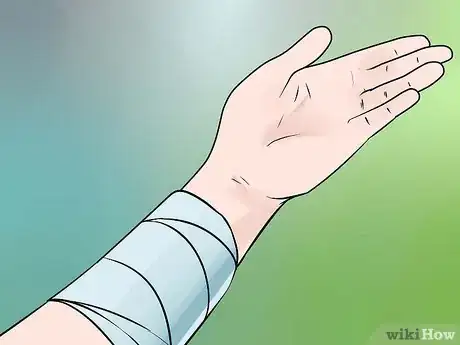

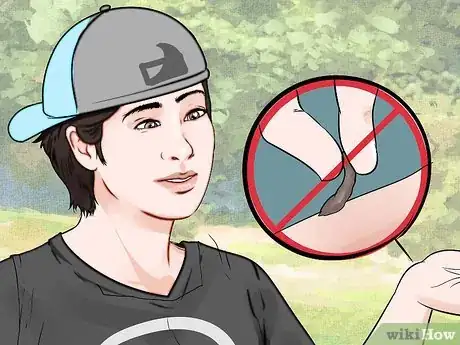


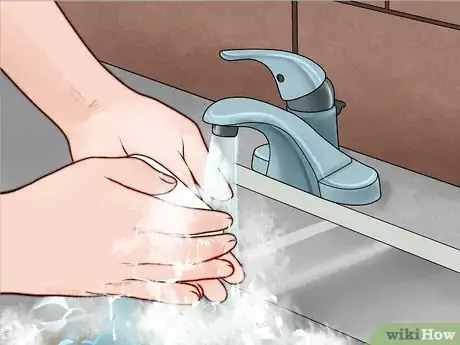
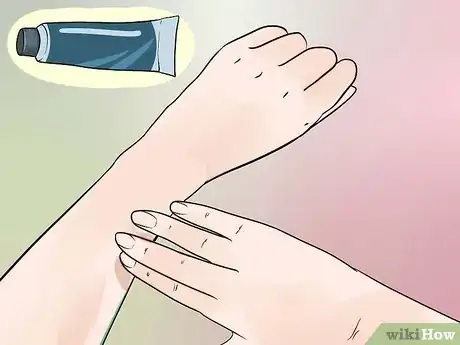
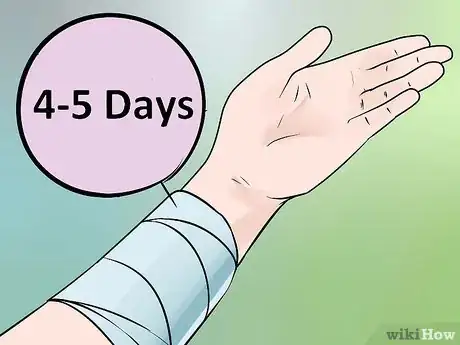
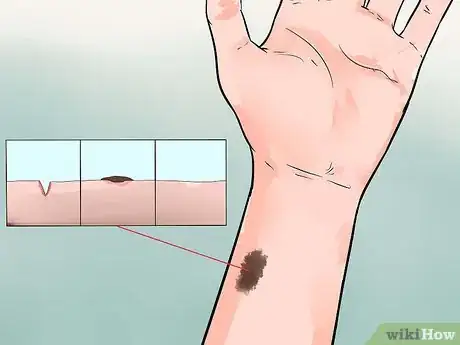
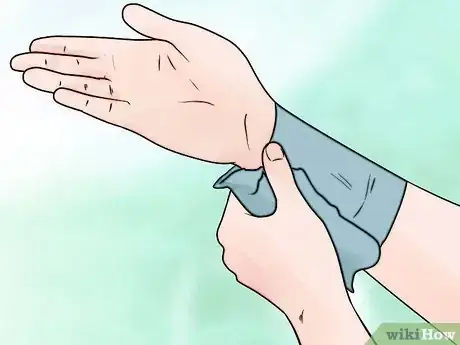
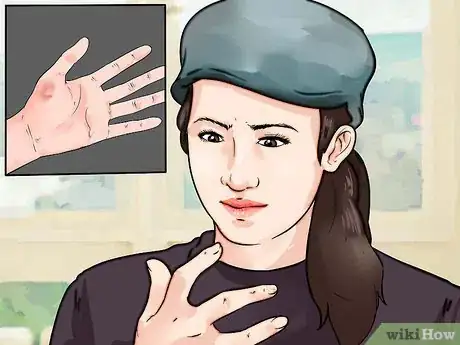
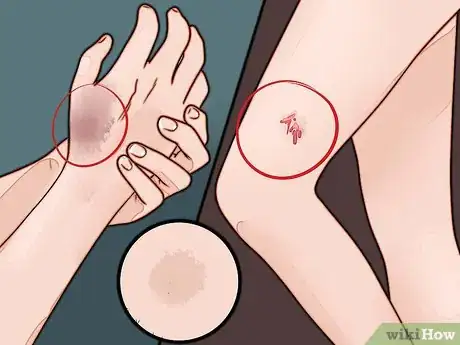
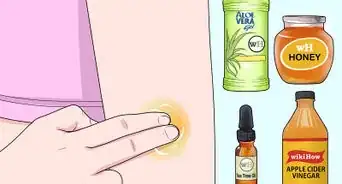



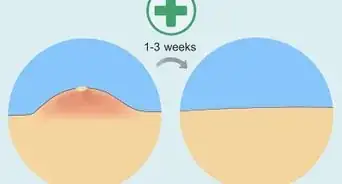
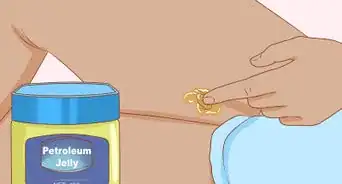
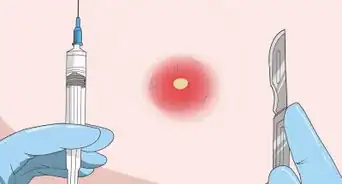
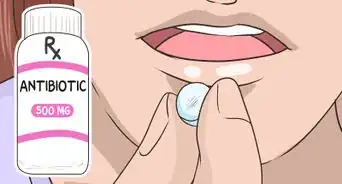
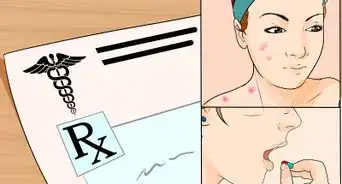


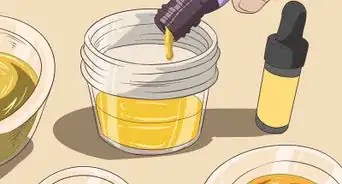










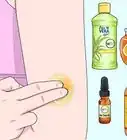






































Medical Disclaimer
The content of this article is not intended to be a substitute for professional medical advice, examination, diagnosis, or treatment. You should always contact your doctor or other qualified healthcare professional before starting, changing, or stopping any kind of health treatment.
Read More...